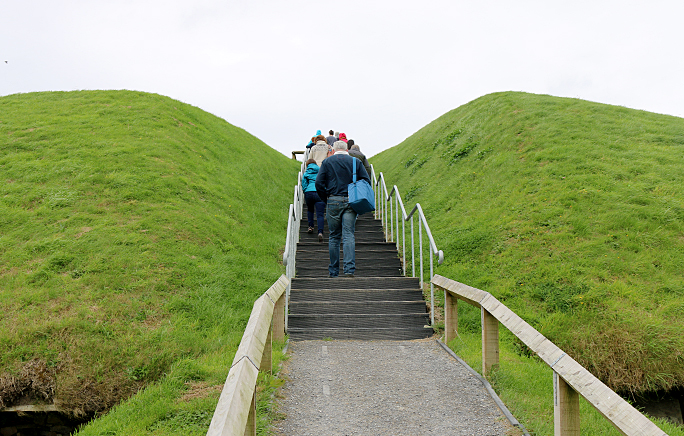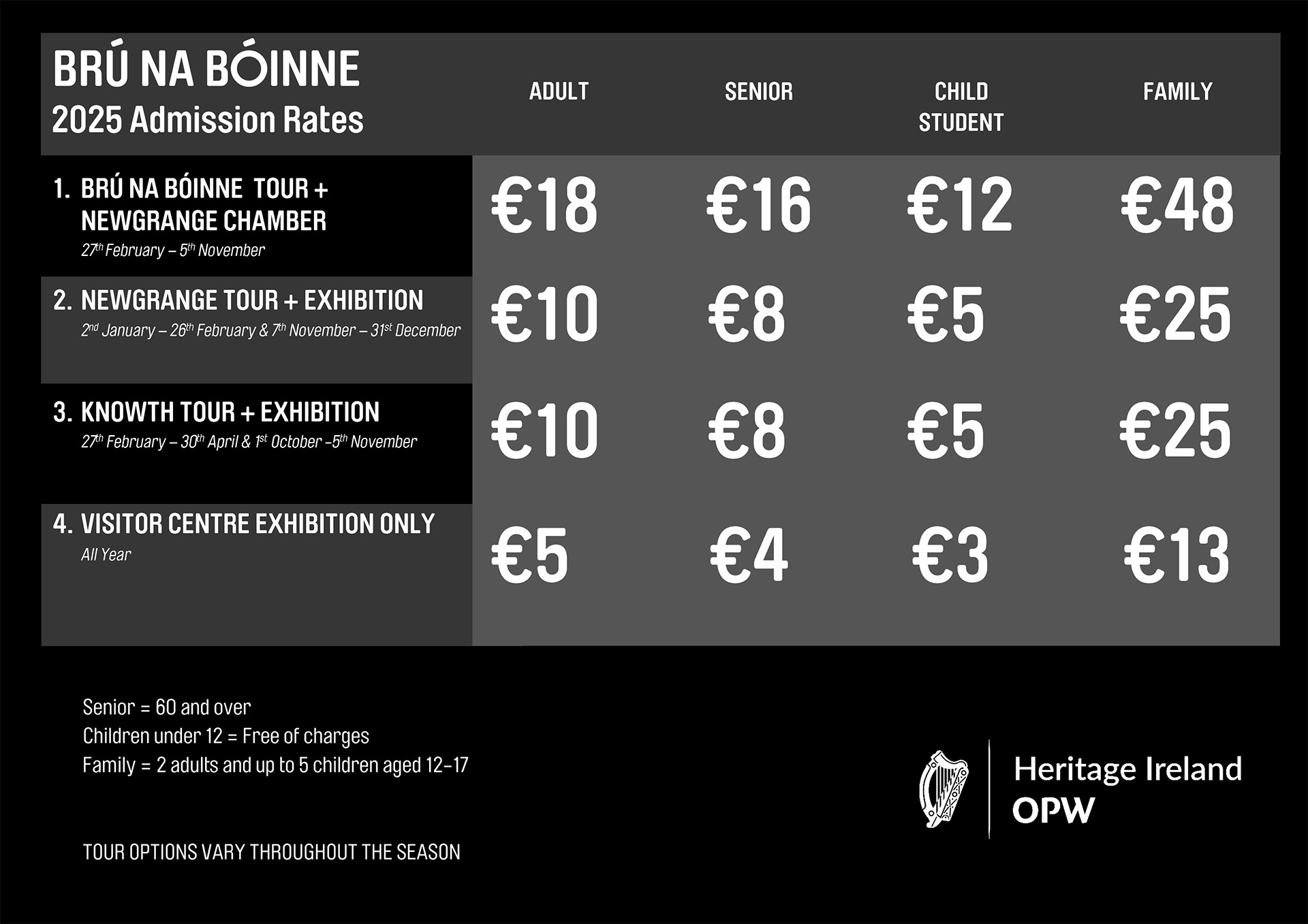Built greater than 5,000 years ago, Brú na Bóinne is a passage tomb which is also known as the Great Mound at Knowth; and is surrounded by 18 smaller satellite mounds. It is similar in size to Newgrange, about which I reported in this article.
Brú na Bóinne: Passage Tomb at Knowth in Ireland
Also known as the Archaeological Ensemble of the Bend of the Boyne — which is designated as a United Nations Educational, Scientific and Cultural Organization World Heritage Site — the Great Mound has two passages with entrances on opposite sides: the Western tomb has a passage which is 34 meters in length; while the passage of the Eastern tomb is slightly longer, ending with a chamber in the shape of a cross.

Overcast skies emphasized the brilliance of the saturated green color of the grass, lending credence to the name Emerald Isle for Ireland.

The grass would probably need to be cut again by the time one person finished mowing and manicuring all of it. I am not certain as to the size of the landscaping staff; but I am sure that there is greater than one person doing it all.

Examples of megalithic art are found on the kerbstones surrounding the mounds — such as the ones shown in the photographs above and below.

Knowth boasts the greatest concentration of megalithic art in Europe with its greater than 300 decorated stones.

As with Newgrange, you cannot enter the passage tomb of Knowth without an official guide; and due to the popularity of the site, time is limited once inside. The guide for the tour on which I was a participant happened to be an older woman with a pronounced Irish brogue; and she was as funny as she was knowledgeable. No script was needed for her, as she must have been guiding tours at Knowth for years.

After going across a green metal bridge of sorts, we went down some stairs into the passage tomb itself.

The photograph above shows detail of one of the walls inside the passage tomb. Another wall is almost entirely devoted to information, as there are no fewer than three large color placards affixed to it.

Guests were invited to climb the stairs to the top of the mound.

The views were nice; but not as scenic as from Newgrange.

We were told that we were able to see Dowth — not to be confused with Knowth or Howth — which is also a passage tomb site; and one of the “newer” ones at that. I did not go to Dowth. Which is furthest south: Knowth, Dowth or Howth? The answer is easily Howth by a long shot; and Howth is a seaside village — not a passage tomb.
All right — I have already run my mouth about Howth, Dowth and Knowth being south too much; so please forgive my digression and allow me to return to the trip report already in progress.

Starting at the original ground level, the mounds were constructed in layers consisting of re-deposited turf, cairn stones, clay, a mixture of earth and stone, and more cairn stones before being covered with a layer of live turf.

Each kerbstone has a unique carving on it; and some of them even have carvings on both the obverse and reverse sides.

The decorations of megalithic art on kerbstones are most elaborate near the entrances of the passage tombs.

The guide remarked about the phallic symbolism of the elongated erect stone shown in the photograph above. It was supposedly regarded as a place of fertility for women.
Final Boarding Call
For the record, the entrance fee for Knowth used to cost five euros per person back in 2014, which included admission to the exhibition in the Brú na Bóinne Visitor Centre; although reduced admission prices were available to senior citizens, groups, children and students. Tickets used to be sold in person on a first-come, first-serve basis; but in 2025, tickets must now be purchased in advance.
Brú na Bóinne
Donore
Drogheda
County Meath
A92 EH5C
Ireland
Operating Hours of the Visitor Centre
- January 2 through February 26 9:00 in the morning through 4:15 in the afternoon
- February 27 through February 28 9:30 in the morning through 4:45 in the afternoon
- March through April 9:30 in the morning through 4:45 in the afternoon
- May through August 9:00 in the morning through 5:45 in the afternoon
- September 9:00 in the morning through 5:15 in the afternoon
- October through December 9:00 in the morning through 4:15 in the afternoon
- December 24 through December 27 and January 1 Closed
Admission Rates for 2025

Once the tickets are purchased, guests must cross the footbridge over the River Boyne to access the awaiting shuttle buses — some of which go to Newgrange; while others go to Knowth. If you decide to splurge 18 euros to see both — the price was eleven euros in 2014 — you must take the shuttle bus from one passage tomb back to catch the shuttle bus to the other passage tomb. Leave yourself some time, as you could wait as long as ten minutes before a shuttle bus departs. Factor in the actual trips; and it is easy to need at least 30 minutes between both passage tombs.
To get to Knowth — which is located in County Meath approximately 38 kilometers north of Dublin — drive on the M1 highway north from Dublin to junction 9; and at the roundabout, turn left and head west on Donore Road. Knowth is located fewer than five kilometers from the exit of M1 — and the signage is quite clear, as you will not get lost. Be aware, however, that there is a toll of €2.30 each way on M1 at a toll plaza located between junctions 7 and 8 near Dardistown; so have your cash ready — unless you decide to exit at junction 7 to take route R132 north to Drogheda and turn left onto Donore Road in order to avoid paying the toll.
The toll on M1 used to be €1.90 back in 2014…
All photographs ©2014 by Brian Cohen.

